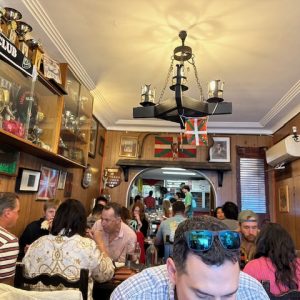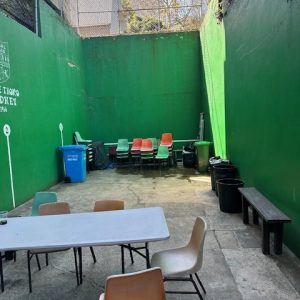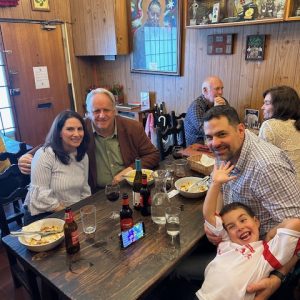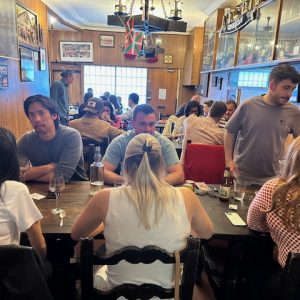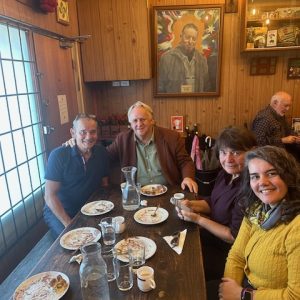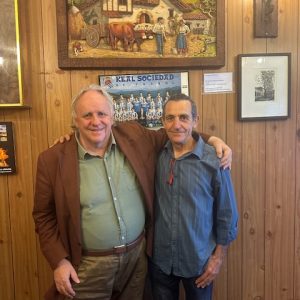Sydney’s Basque Club
I recently met a fellow who goes to Sydney’s Basque Club for Sunday lunch. Somewhat astonished, I went along to discover this cultural icon
Sure enough, the “Gure Txoko Basque Club”, is the longest surviving official Basque organisation in Australia. It was established in 1966 by a group of 26 families in Sydney who wanted to preserve their culture, traditions, and most importantly, food! In the Basque language (euskera) – Gure Txoko means ‘our corner’.
The club is only open once a week, when it serves lunch on Sunday at 2pm. The menu is prepared by volunteer chefs.
But what is the history of Basques in Australia? Basque people immigrated to Australia, mainly in the post-WWII era, to work as canecutters in Queensland, establishing a community in towns like Trebonne. This community, though smaller than those in Latin America, created cultural organizations like the Gure Txoko Basque Club in Sydney and the Basque Club of North Queensland.
The number of Basque immigrants has declined significantly due to the mechanization of the sugar industry and economic improvements in the Basque Country. Many Basques returned to their homeland. While the community is smaller today, descendants retain ethnic pride and are involved in efforts to preserve Basque language and culture.
Who are the Basques? They could be considered one of Europe’s first nations. Indeed, my good friend Ken sees the Basques as Europe’s aborigines.
In point of fact, the Basques are an indigenous ethnic group, inhabiting the Basque Country, a region spanning the border of northeastern Spain and southwestern France. They are one of Europe’s oldest surviving ethnic groups, with roots in the Paleolithic era. DNA studies indicate they descend from early farmers who mixed with local hunter-gatherers and have maintained genetic continuity with Mesolithic groups.
Due to their location in the Pyrenees Mountains and near the Bay of Biscay, the Basques were historically isolated, which helped preserve their unique language and culture. Despite surrounding populations adopting Indo-European languages and cultures, the Basques resisted these influences, largely retaining their distinct Basque language and traditions.
Their defining feature is their language, Euskara, a language that predates the Roman Empire and is distinct from the Indo-European family of languages. Significant Basque communities also exist in other parts of the world, including South America and the United States, as well as in the Philippines of all places.
I was very warmly welcomed by “Manu” who is the Vice President of the club and of Spanish Basque origin (see photo). He showed me around, and explained the history and activities of the club. The club accommodates only 40 people at the Sunday lunch, so bookings are essential.
On the day of my visit, lunch consisted of a Russian salad (prepared by an ethnically Russian lady from Kazakhstan), lasagne and tiramisu. True, these are not Basque dishes, but the spirit of the club is that volunteers pitch in.
I did learn that Basque cheesecake, also known as cheesecake San Sebastian or burnt Basque cheesecake, is a crustless cheesecake originating from the Basque Country, Spain. It has a caramelized, nearly burnt exterior and creamy, custard-like interior, achieved by baking at high temperatures. And one variant of this is Tiramisu Basque Cheesecake.
One of the great pleasures of a visit to a club like Sydney’s Basque Club is the people you meet. I spent part of the afternoon chatting with Oihana Lorenzi, who has recently taken up a post at the French consulate in Sydney, and her parents. (In Basque, Oihana is a female name meaning ‘forest’ or ‘woodland’.)
Oihana’s mother, who is a Basque, regaled me with stories of her first visit to the club some 30 years ago. The club’s address of 344 Liverpool St, Darlinghurst, seems quite trendy today, was decidedly sordid back in the day.
